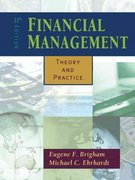Financial statement account identification Mark each of the accounts listed in the following table as follows: a. In column (1), indicate in which statement-income statement (IS) or balance sheet (BS)the account belongs. b. In column (2), indicate whether the account is a current asset (CA), current liability (CL), expense (E), fixed asset (FA), long-term debt (LTD), revenue (R), or stockholders' equity (SE). (Select from the drop-down menus.) (1) Statement Account Name Accounts payable (2) Type of Account (Select from the drop-down menus.) (1) Statement Account Name Accounts receivable (2) Type of Account (Select from the drop-down menus.) (1) Statement (2) Type of Account Account Name (1) Statement (2) Type of Account Account Name Accruals (Select from the drop-down menus.) (1) Statement (2) Type of Account Account Name Accumulated depreciation (Select from the drop-down menus.) (1) Statement (2) Type of Account Account Name Administrative expense (1) Statement (2) Type of Account Account Name Buildings (Select from the drop-down menus.) (1) Statement (2) Type of Account Account Name Cash (Select from the drop-down menus.) (1) Statement (2) Type of Account Account Name Common stock (at par) (1) Statement (2) Type of Account Account Name Cost of goods sold (Select from the drop-down menus.) (1) Statement (2) Type of Account Account Name Depreciation expense (Select from the drop-down menus.) (1) Statement (2) Type of Account Account Name Equipment (1) Statement (2) Type of Account Account Name General expense (Select from the drop-down menus.) (1) Statement (2) Type of Account Account Name Interest expense (Select from the drop-down menus.) (2) (1) Statement Type of Account Account Name Inventories (1) Statement (2) Type of Account Account Name Land (Select from the drop-down menus.) (1) Statement (2) Type of Account Account Name Long-term debt (Select from the drop-down menus.) (1) Statement (2) Type of Account Account Name Machinery Click to select your answer(s). OCT 14 6 MacBook 20 F3 000 000 F2 F4 F5 F6 # $ % (1) Statement (2) Type of Account Account Name Marketable securities (Select from the drop-down menus.) (1) Statement (2) Type of Account Account Name Notes payable (Select from the drop-down menus.) (1) Statement (2) Type of Account Account Name Operating expense (1) Statement (2) Type of Account Account Name Paid-in capital in excess of par (Select from the drop-down menus.) (1) Statement (2) Type of Account Account Name Preferred stock (Select from the drop-down menus.) (1) Statement (2) Type of Account Account Name Preferred stock dividends (1) Statement (2) Type of Account Account Name Retained earnings (Select from the drop-down menus.) (1) Statement (2) Type of Account Account Name Sales revenue (Select from the drop-down menus.) (1) Statement (2) Type of Account Account Name Selling expense (1) Statement (2) Type of Account Account Name Selling expense (Select from the drop-down menus.) (1) Statement (2) Type of Account Account Name Taxes (Select from the drop-down menus.) (1) Statement Account Name Vehicles (2) Type of Account ds a. In column (1), indicate in which statementincome statement (IS) or bal. account belongs. b. In column (2), indicate whether the account is a current asset (CA), curre (E), fixed asset (FA), long-term debt (LTD), revenue (R), or stockholders' equ (Select from the drop-down menus.) (1) Statement Type of Account Name Accounts payable (Select from the drop-down menus.) IS BS (2 Type of Sta Account Name Accounts receivable (Select from the drop-down menus.) (1) Statement (2) Type of A Account Name count is a current asset (CA), current liability (CL) 2), revenue (R), or stockholders' equity (SE). (1) Statement (2) Type of Account CA (1) Statement CL Type E FA LTD (1) Statement R Type SE


















